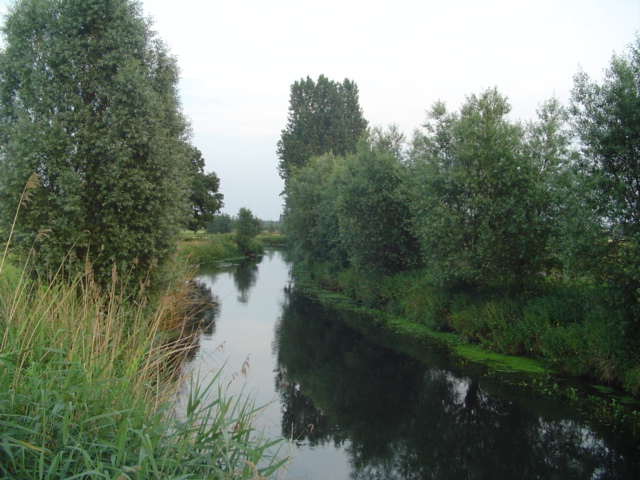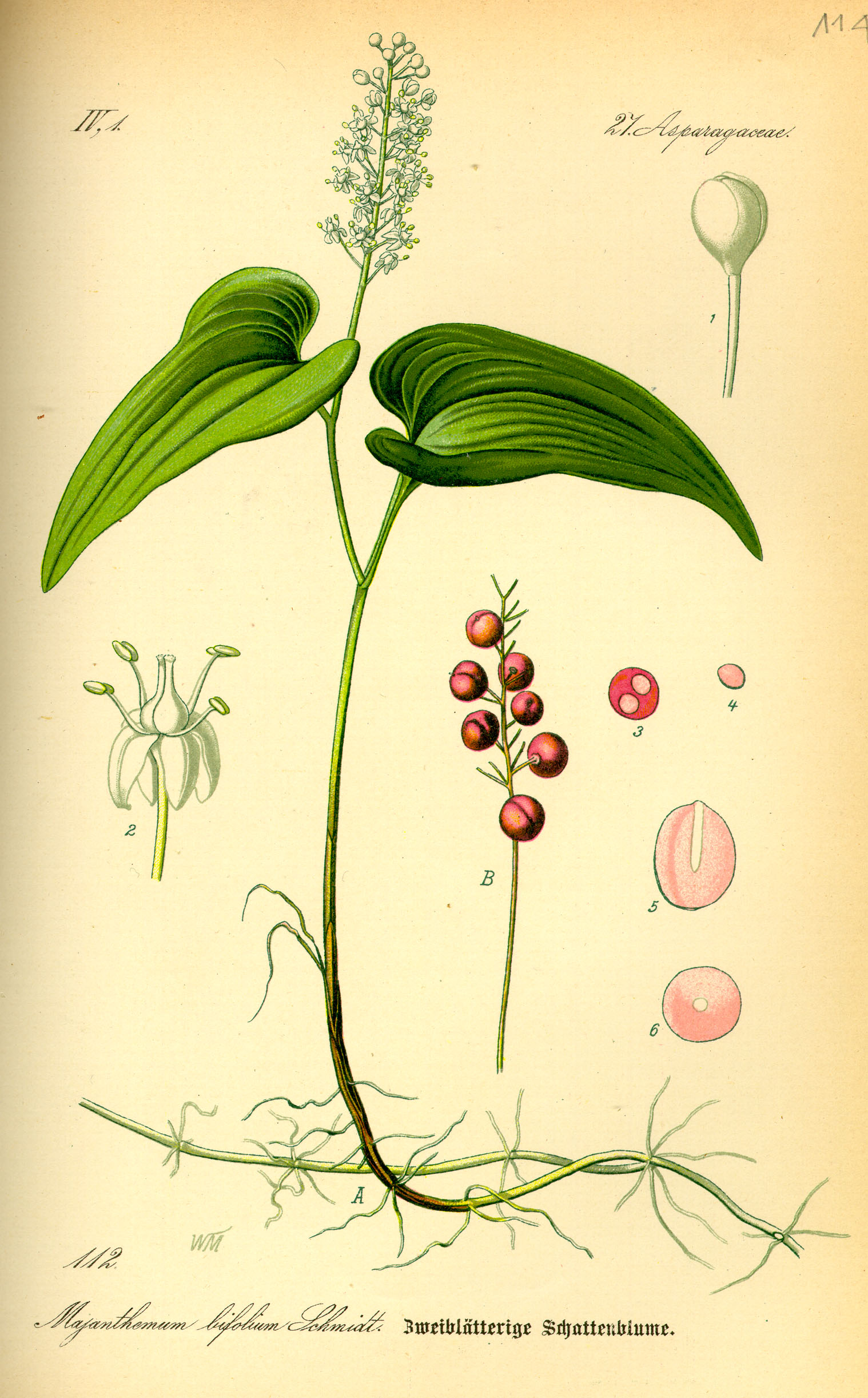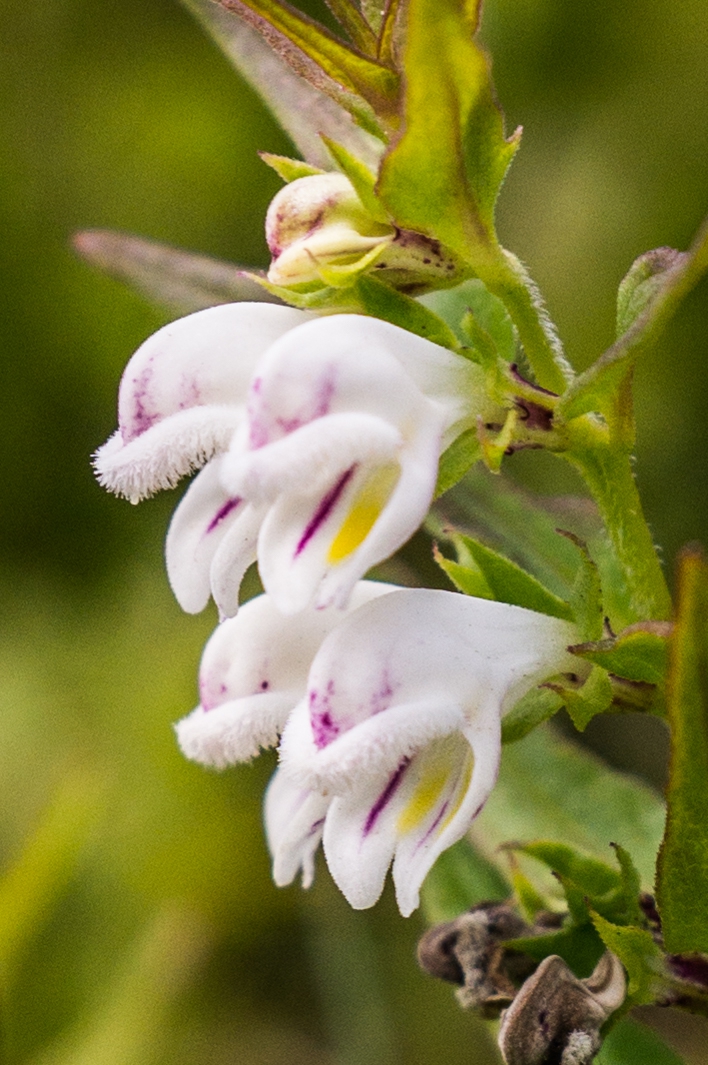|
Moerkuilen
The Moerkuilen are, along with the Dommelbeemden a forestry area in a bend of the Dommel river north east of Nijnsel in Meierijstad. It is located at the Lieshoutse Dijk, not far from the A50 motorway. The protected area measures over 100 acres and connects with the Vresselse Bossen (Vresselsh Forests) in the south. The Moerkuilen are part of the larger area Het Groene Woud. The lake in a lowland peat soil, was created by the dredging of Moer, which is quagmire consisting of decayed plant material that could be used as peat (fuel) after drying. The Moerkuilen borders the Dommelbeemden. It is a Fen, moore lake in the Dommel valley, and is known for Nymphaeaceae, water lilies, potamogeton, calla and carex species. Around the fish-rich peat lake, which attracts many birds, is a swamp forest (Carr (landform), carr) bordered by forestry river dunes. There is a varied flora including common cow wheat and may lily. The river Dommel streamed past it over a higher plateau. Because of this ... [...More Info...] [...Related Items...] OR: [Wikipedia] [Google] [Baidu] |
Moerkuilen
The Moerkuilen are, along with the Dommelbeemden a forestry area in a bend of the Dommel river north east of Nijnsel in Meierijstad. It is located at the Lieshoutse Dijk, not far from the A50 motorway. The protected area measures over 100 acres and connects with the Vresselse Bossen (Vresselsh Forests) in the south. The Moerkuilen are part of the larger area Het Groene Woud. The lake in a lowland peat soil, was created by the dredging of Moer, which is quagmire consisting of decayed plant material that could be used as peat (fuel) after drying. The Moerkuilen borders the Dommelbeemden. It is a Fen, moore lake in the Dommel valley, and is known for Nymphaeaceae, water lilies, potamogeton, calla and carex species. Around the fish-rich peat lake, which attracts many birds, is a swamp forest (Carr (landform), carr) bordered by forestry river dunes. There is a varied flora including common cow wheat and may lily. The river Dommel streamed past it over a higher plateau. Because of this ... [...More Info...] [...Related Items...] OR: [Wikipedia] [Google] [Baidu] |
Nijnsel
Nijnsel ( North Meierijs dialect: ''Nènzûl'' ) is a village in the province of North Brabant, located in the Meierij of 's-Hertogenbosch. Nijnsel is a parish of the municipality of Meierijstad. Etymology The word Nijnsel means ''new residence'' ("nij" mening new, "sel" meaning residence). The name of the nearby hamlet Vressel means ''Old residence''. "Sel" being derived from the word "sale", which refers to the largest house in the area which belonged to the local nobleman in the early medieval period. History Source: The hamlets Nijnsel and Vressel on either side of the Dommel river are known to be habituated in prehistoric times. There are archaeological remains of the Bell Beaker culture and also remains of the Roman era were found. There are numerous archaeological monuments which also remain from the Mesolithic era. A settlement from the early Bronze Age, around 1500 BC was excavated in Nijnsel. Nijnsel originated as a settlement around a chapel which was dedicated to ... [...More Info...] [...Related Items...] OR: [Wikipedia] [Google] [Baidu] |
Dommel
The Dommel is a small river in Belgium and the Netherlands, left tributary of the Dieze. It is 120 km long, of which 85 km in the Netherlands. The Dommel takes in water from the Keersop, Tongelreep, Run, Gender and Kleine Dommel streams and merges at 's-Hertogenbosch with the Aa stream to form the river Dieze, which subsequently flows towards the Meuse. The main cities and towns along the Dommel's course are Peer, Neerpelt, Valkenswaard, Dommelen, Eindhoven, Son en Breugel, Sint-Oedenrode, Boxtel, Sint-Michielsgestel and 's-Hertogenbosch. Drainage basin The drainage basin of the Dommel belongs to that of the Meuse. To the west of is the basin of the Donge, which also belongs to that of the Meuse. To the south the basin of the Dommel borders that of the Schelde. To the east is that of the Aa. Further to the south a number of rivers flow into the Meuse much further upstream. History Former glory The Dommel often looks like a brook nowadays, but it has many geographical ... [...More Info...] [...Related Items...] OR: [Wikipedia] [Google] [Baidu] |
Dommelbeemden
The Dommelbeemden are, along with the Moerkuilen a forestry area in a bend of the Dommel river northeast of Nijnsel in Meierijstad. It is located at the Lieshoutse Dijk, not far from the A50 motorway. The protected area measures over 100 acres. The Dommelbeemden are part of the larger area Het Groene Woud. This diverse area was designated as a natural monument in 1977. The most original part and natural state of the Dommel can be found between Eindhoven and Boxtel and hence in the Dommelbeemden. Here the Dommel has still its original winds and meanders and forms a cultural-historical and valuable landscape area. The Dommelbeemden consist of species-poor meadows with willows and include rattles and orchids. There are wet meadows in which rare plants such as Marsh Lousewort can be found. A clogging old meander of the Dommel there is filled with water lilies. At a higher elevation, which is part of the Central Brabant Sand Ridge, there are traditional "bolakkers" (high fields). ... [...More Info...] [...Related Items...] OR: [Wikipedia] [Google] [Baidu] |
Vresselse Bossen
East of the village of Nijnsel and the hamlet of Vressel, both in Meierijstad, North Brabant, Netherlands, is the location of the Vresselse bossen or ''Vresselsche Bosch'' (Vressels Forest). The Vresselse Bossen is a forest area of 241 ha. It is owned and managed by the National Forest Service (Staatsbosbeheer). The forest is named after the nearby hamlet of Vressel. It is a young forest that planted in a dune, drift-sand ridge. At the beginning of the 20th century, there was scarcely a tree in the area. The area consisted mainly of dunes and heathland. At the edges of the area lived farmers who were severely affected by the shifting sands. To protect the fields was therefore decided to reforest the drift-sand. At that time, almost exclusively pine was used for the reforesting. In the twenties of the 20th century, it had become a production forest consisting of Scots pine for the Mining in Limburg, Limburgian mines. Within the area, there are two main fen systems: The Hazenputten ... [...More Info...] [...Related Items...] OR: [Wikipedia] [Google] [Baidu] |
Carr (landform)
A carr is a type of waterlogged wooded terrain that, typically, represents a succession stage between the original reedy marsh and the likely eventual formation of forest in a sub-maritime climate.Whittow, John (1984). ''Dictionary of Physical Geography''. London: Penguin, 1984. . Carrs are wetlands that are dominated by shrubs rather than trees. The carr is one stage in a hydrosere: the progression of vegetation beginning from a terrain submerged by fresh water along a river or lake margin. In sub-maritime regions, it begins with reed-marsh. As the reeds decay, the soil surface eventually rises above the water, creating fens that allow vegetation such as sedge to grow. As this progression continues, riparian trees and bushes appear and a carr landscape is created – in effect a wooded fen in a waterlogged terrain. At this stage, overall, unlike the overwhelming acidity of decaying reeds, the pH is not too acidic and the soil is not too deficient in minerals, making a habitat fo ... [...More Info...] [...Related Items...] OR: [Wikipedia] [Google] [Baidu] |
Forests Of The Netherlands
A forest is an area of land dominated by trees. Hundreds of definitions of forest are used throughout the world, incorporating factors such as tree density, tree height, land use, legal standing, and ecological function. The United Nations' Food and Agriculture Organization (FAO) defines a forest as, "Land spanning more than 0.5 hectares with trees higher than 5 meters and a canopy cover of more than 10 percent, or trees able to reach these thresholds ''in situ''. It does not include land that is predominantly under agricultural or urban use." Using this definition, '' Global Forest Resources Assessment 2020'' (FRA 2020) found that forests covered , or approximately 31 percent of the world's land area in 2020. Forests are the predominant terrestrial ecosystem of Earth, and are found around the globe. More than half of the world's forests are found in only five countries (Brazil, Canada, China, Russia, and the United States). The largest share of forests (45 percent) are in th ... [...More Info...] [...Related Items...] OR: [Wikipedia] [Google] [Baidu] |
May Lily
''Maianthemum bifolium'' (false lily of the valley or May lily) is often a localized common rhizomatous flowering plant, native from western Europe (including Britain''New Flora of The British Isles'', Clive Stace) east to Siberia, China and Japan. Non-flowering stems usually have only one waxy leaf, but on flowering plants there is one basal leaf that withers away before flowering, and two stem leaves produced alternately up the 10–20 cm tall stems, which are topped off with many star-shaped white flowers. The leaves are heart to triangular, 3–8 cm long and 2–5 cm broad, with small fine hairs on the veins. The flowers have four tepals, four stamens and have two chambers in the pistil; flowering is in mid spring to early summer. This species, along with '' Maianthemum canadense'' and '' Maianthemum dilatatum'' are the only four-tepaled species. One to two seeds are produced in round berries that are speckled red when immature and redden with age. Thi ... [...More Info...] [...Related Items...] OR: [Wikipedia] [Google] [Baidu] |
Cow Wheat
''Melampyrum'' is a genus of about 20 species of herbaceous flowering plants in the family Orobanchaceae known commonly as cow wheat. They are native to temperate regions of the Northern Hemisphere. They are parasite, hemiparasites on other plants, obtaining water and nutrients from host plants, though they are able to survive on their own without parasitising other plants.Kim, K. and S. Yun. (2012)A new species of ''Melampyrum'' (Orobanchaceae) from southern Korea.''Phytotaxa'' 42 48-50. ''Melampyrum'' species are used as food plants by the larvae of some Lepidoptera species, including the mouse moth (''Amphipyra tragopoginis''). Phylogeny The phylogeny of the genera of Rhinantheae has been explored using molecular characters. ''Melampyrum'' appears as a distant relative of other genera of Rhinantheae. It is the sister group of two clades: (i) ''Rhynchocorys'', ''Lathraea'', and ''Rhinanthus'' ; and (ii) the core Rhinantheae containing ''Bartsia'', ''Euphrasia'', ''Tozzia'', ' ... [...More Info...] [...Related Items...] OR: [Wikipedia] [Google] [Baidu] |
Potamogeton
''Potamogeton'' is a genus of aquatic, mostly freshwater, plants of the family Potamogetonaceae. Most are known by the common name pondweed, although many unrelated plants may be called pondweed, such as Canadian pondweed (''Elodea canadensis''). The genus name means "river neighbor", originating from the Greek ''potamos'' (river) and ''geiton'' (neighbor). Morphology ''Potamogeton'' species range from large (stems of 6 m or more) to very small (less than 10 cm). Height is strongly influenced by environmental conditions, particularly water depth. All species are technically perennial, but some species disintegrate in autumn to a large number of asexually produced resting buds called turions, which serve both as a means of overwintering and dispersal. Turions may be borne on the rhizome, on the stem, or on stolons from the rhizome. Most species, however, persist by perennial creeping rhizomes. In some cases the turions are the only means to differentiate species. The leav ... [...More Info...] [...Related Items...] OR: [Wikipedia] [Google] [Baidu] |
Carex
''Carex'' is a vast genus of more than 2,000 species of grass-like plants in the family Cyperaceae, commonly known as sedges (or seg, in older books). Other members of the family Cyperaceae are also called sedges, however those of genus ''Carex'' may be called true sedges, and it is the most species-rich genus in the family. The study of ''Carex'' is known as caricology. Description All species of ''Carex'' are perennial, although some species, such as '' C. bebbii'' and '' C. viridula'' can fruit in their first year of growth, and may not survive longer. They typically have rhizomes, stolons or short rootstocks, but some species grow in tufts (caespitose). The culm – the flower-bearing stalk – is unbranched and usually erect. It is usually distinctly triangular in section. The leaves of ''Carex'' comprise a blade, which extends away from the stalk, and a sheath, which encloses part of the stalk. The blade is normally long and flat, but may be folded, inrolled, c ... [...More Info...] [...Related Items...] OR: [Wikipedia] [Google] [Baidu] |
Calla
''Calla'' (bog arum, marsh calla, wild calla, squaw claw, and water-arumDickinson, T.; Metsger, D.; Bull, J.; & Dickinson, R. (2004) ROM Field Guide to Wildflowers of Ontario. Toronto:Royal Ontario Museum, p. 62.) is a genus of flowering plant in the family Araceae, containing the single species ''Calla palustris''. Description It is a rhizomatous herbaceous perennial plant growing in bogs and ponds. The leaves are rounded to heart-shaped, long on a petiole, and broad. The greenish-yellow inflorescence is produced on a spadix about long, enclosed in a white spathe. The fruit is a cluster of red berries, each berry containing several seeds. The plant is very poisonous when fresh due to its high oxalic acid content, but the rhizome (like that of ''Caladium'', ''Colocasia'', and ''Arum'') is edible after drying, grinding, leaching and boiling. Taxonomy The genus formerly also included a number of other species, which have now been transferred to the separate genus ''Zan ... [...More Info...] [...Related Items...] OR: [Wikipedia] [Google] [Baidu] |








